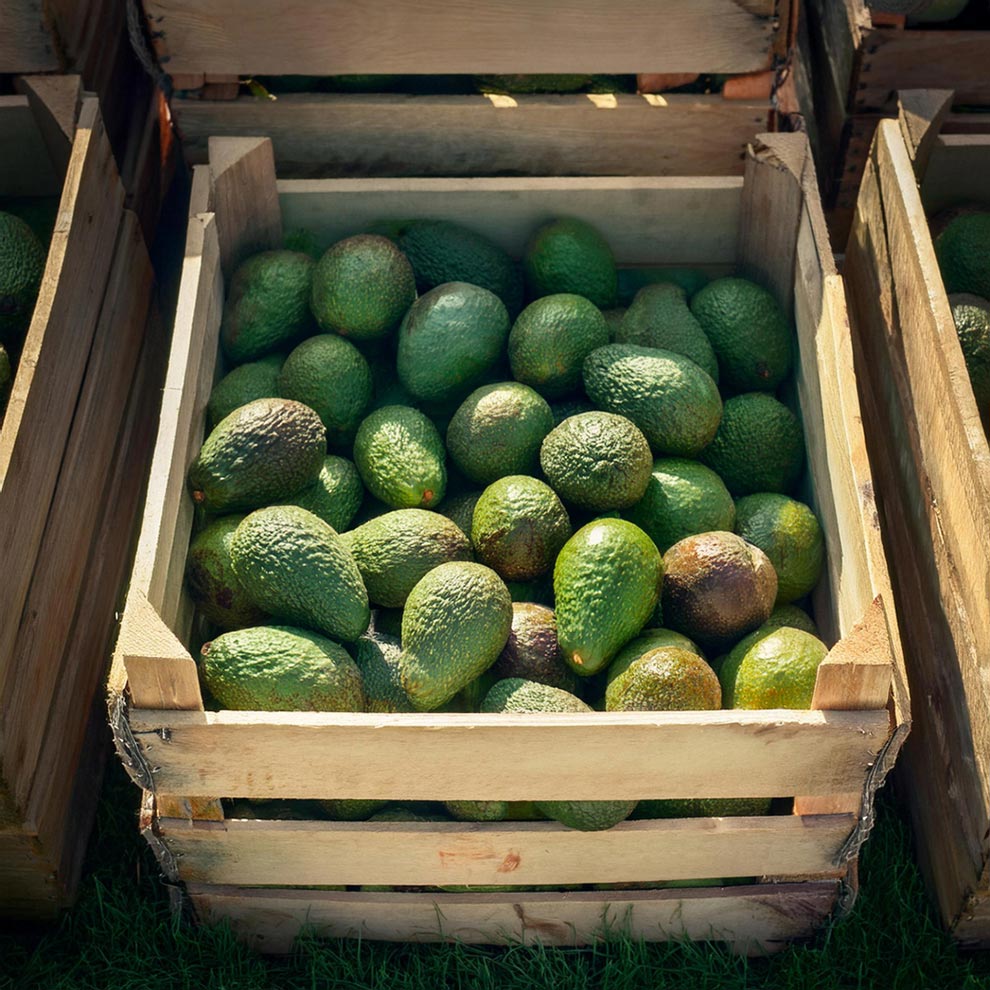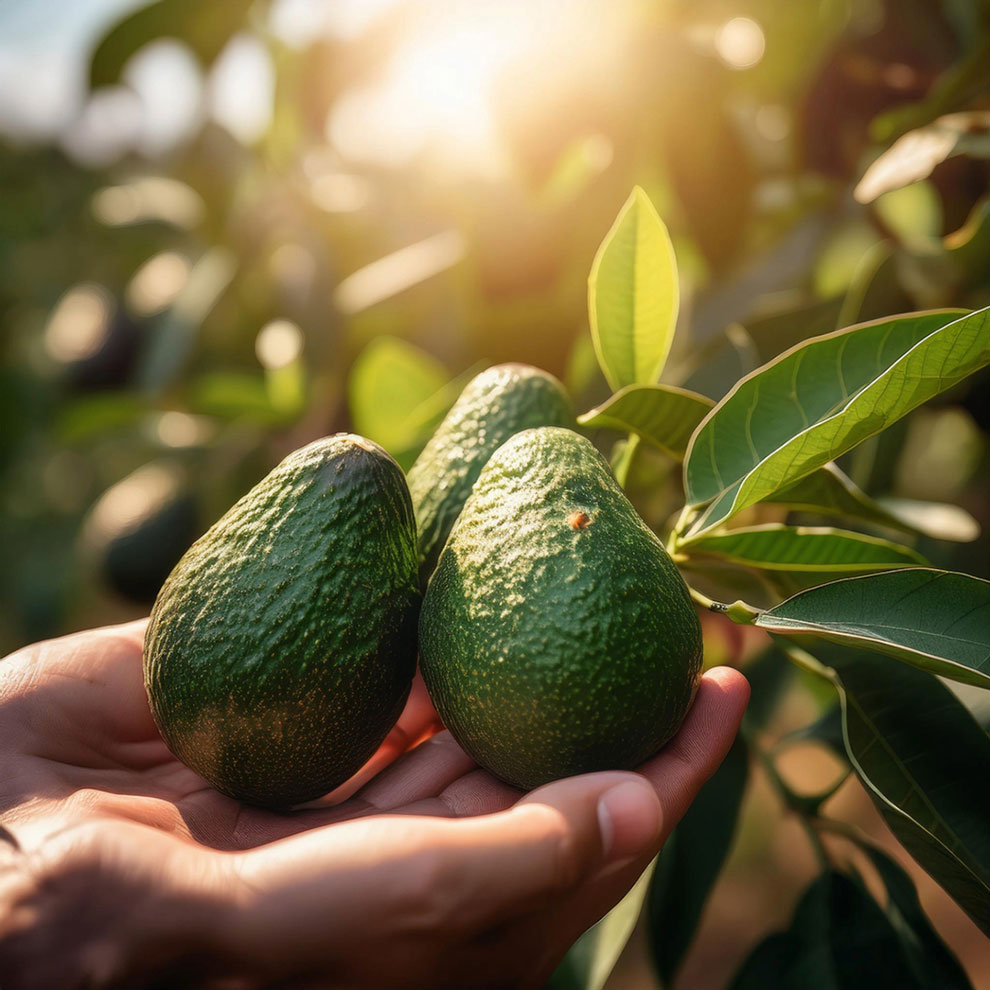Avocados, known for their rich, creamy texture and health benefits, have become a staple in global cuisine. As demand for avocados continues to rise, understanding how they are grown and harvested for commercial use is essential. Commercial avocado farming is a complex process involving precise agricultural techniques, careful environmental considerations, and efficient harvesting methods to meet the ever-growing global demand.
In this post, we’ll explore everything from avocado cultivation and farming practices to how they are harvested for commercial markets.
Escape with the Avocado Dreaming design 🥑✨ Drift into a serene slumber amidst lush avocados, overlooking a tranquil canyon river. Shop today!

The Origins of Commercial Avocado Farming
Avocado farming for commercial purposes has its roots in Mexico, Central America, and parts of South America. The fruit, originally known as Persea americana, has been cultivated for thousands of years by indigenous people. However, large-scale commercial farming only started in the 20th century, primarily in Mexico and the United States (California and Florida).
The Rise of Avocado Demand
Avocado demand skyrocketed globally in the early 2000s, particularly in regions like North America, Europe, and parts of Asia. The growing popularity of healthy eating trends and diets like keto, paleo, and plant-based lifestyles increased the demand for nutrient-rich foods like avocados. As the market expanded, commercial avocado farming had to adapt to keep up.
Growing Avocados: From Seed to Tree
Selecting the Right Avocado Variety
There are several varieties of avocados grown commercially, each with unique characteristics. The most common variety for commercial farming is the Hass avocado, which accounts for about 80% of global production. Other popular varieties include Fuerte, Bacon, and Zutano. The choice of variety depends on factors such as climate, soil type, and market demand.
Optimal Growing Conditions for Avocados
Growing avocados commercially requires specific environmental conditions for optimal growth and fruit production. Key factors include:
- Climate: Avocados thrive in subtropical and tropical climates. They require a temperature range between 60°F and 85°F. Frost can severely damage avocado trees, so they are typically grown in frost-free regions.
- Soil: Avocado trees prefer well-drained, loose soils rich in organic matter. Sandy loam or decomposed granite is ideal for commercial avocado farming. Proper drainage is essential to prevent root rot, a common issue in waterlogged soils.
- Sunlight: Avocados need full sunlight to grow properly. In commercial farms, trees are planted with sufficient spacing to ensure each tree receives ample sunlight for photosynthesis and fruit production.
- Water Requirements: Avocados have relatively high water needs, especially during the fruiting season. However, overwatering can lead to root disease, so irrigation systems must be carefully managed.

Avocado Propagation Methods
Most commercial avocado trees are grown from grafted seedlings rather than seeds. Grafting ensures that the new tree inherits the desired characteristics of the parent plant, such as fruit quality, yield, and disease resistance.
- Seed Propagation: While avocados can be grown from seeds, this method is rarely used in commercial farming because seed-grown trees take longer to mature and may not produce fruit identical to the parent tree.
- Grafting: In grafting, a cutting from a mature, fruit-bearing tree is attached to a young seedling rootstock. This method guarantees uniformity in fruit production and faster maturity.
Commercial Avocado Farming Practices
Irrigation Systems in Avocado Farming
Avocado trees require consistent watering, especially in dry climates. Drip irrigation systems are the most commonly used method in commercial avocado farming. This method delivers water directly to the roots of the trees, reducing water wastage and ensuring the trees receive the exact amount of water they need.
Fertilization and Soil Health
Maintaining soil health is essential for avocado production. Fertilization programs are carefully managed to ensure that trees receive the nutrients they need for optimal growth. Nitrogen, phosphorus, and potassium are the primary nutrients required by avocado trees. Organic matter, such as compost and mulch, is often added to improve soil fertility and water retention.
Pest and Disease Management
Avocados are vulnerable to pests and diseases that can significantly impact fruit quality and yield. Common pests include the avocado thrips, persea mite, and root rot fungus. Integrated Pest Management (IPM) techniques are commonly used in commercial farms to reduce the need for chemical pesticides, focusing instead on natural predators and organic methods.
Avocado Harvesting for Commercial Use
Maturity and Harvesting Criteria
Harvesting avocados at the right stage of maturity is crucial for ensuring high-quality fruit. Unlike many fruits, avocados do not ripen on the tree; they ripen after they are harvested. Commercial avocado farms monitor the fruit’s dry matter content to determine when they are ready for harvest. Once the avocado reaches the desired dry matter percentage, it is ready to be picked.
Harvesting Methods
Avocados are hand-harvested, as mechanical harvesting methods can damage the fruit. Workers use poles with attached baskets or clippers to gently pick the fruit from the tree. Special care is taken to avoid damaging the skin, as any bruising can lead to premature spoilage.
- Manual Harvesting: Skilled laborers use long poles equipped with baskets or pruning shears to pluck avocados from trees. Manual harvesting is labor-intensive but ensures that avocados are picked without damage.
- Specialized Equipment: In some large-scale commercial operations, specialized equipment is used to aid in the harvesting process. This includes platforms that allow workers to reach higher branches and conveyor systems to transport harvested fruit.
Post-Harvest Handling and Processing
Once harvested, avocados are transported to packing facilities where they undergo sorting, cleaning, and packaging. The fruit is graded based on size, weight, and external appearance. Avocados intended for export are packed in climate-controlled containers to ensure they remain fresh during transportation.
- Sorting: Avocados are sorted based on size and quality. Any damaged or overripe fruit is removed from the batch.
- Cleaning: The fruit is washed to remove dirt, dust, and any pesticide residue.
- Packaging: Avocados are packed in crates or boxes with protective padding to prevent bruising during transport.
The Global Commercial Avocado Market
Major Avocado-Producing Countries
The global avocado market is dominated by a few key countries, with Mexico leading the way as the largest producer. Other significant avocado-producing countries include:
- Mexico: As the world’s largest producer and exporter of avocados, Mexico produces over 2 million metric tons annually, primarily the Hass variety.
- Peru: Known for its large-scale avocado farms, Peru is a major exporter, especially to Europe.
- Chile: Chile has become a leading avocado exporter, particularly to the United States and Europe.
- United States (California and Florida): California produces most of the avocados grown in the United States, with Florida growing a smaller, more tropical variety.
Export and Distribution Channels
Commercial avocados are exported globally, with key markets including the United States, Canada, Europe, and Asia. The rise of e-commerce and the globalization of food supply chains has made avocados accessible to markets that once had limited availability.
- Export to Major Markets: The United States is the largest importer of avocados, with Mexico supplying the majority of avocados consumed in the country.
- Distribution to Retailers: Once avocados arrive in the destination country, they are distributed to retailers, wholesalers, and food service industries.
Sustainability in Commercial Avocado Farming
Water Usage and Conservation
Water usage is a major concern in commercial avocado farming, especially in regions prone to drought. Sustainable water practices, such as drip irrigation and water recycling systems, are increasingly being implemented to reduce the environmental impact of avocado production.
Organic Avocado Farming
The demand for organic avocados is on the rise, and many commercial farms are adopting organic farming practices. These practices avoid the use of synthetic pesticides and fertilizers, instead focusing on natural soil enhancers and biological pest control.
Fair Trade and Ethical Farming Practices
Fair trade certification is becoming more common in the avocado industry, ensuring that workers are paid fair wages and work in safe conditions. Ethical farming practices also promote sustainability and community development in avocado-growing regions.
Conclusion
Commercial avocado farming is a complex and highly specialized industry, requiring optimal growing conditions, advanced farming techniques, and careful harvesting practices. As demand for avocados continues to rise globally, commercial avocado farms are continually innovating to meet consumer demand while prioritizing sustainability and quality.
From the careful selection of avocado varieties to the implementation of sustainable farming practices, commercial avocado production is a global industry that plays a vital role in modern agriculture. By understanding how avocados are grown, harvested, and brought to market, we can better appreciate the effort that goes into producing this beloved fruit. The Latest Avocado Trends: What’s Hot in the World of Avocados?

References
- USDA National Agricultural Statistics Service. Avocado Production Statistics
- University of California Agriculture and Natural Resources. Growing Avocados: Best Practices for Commercial Farming
- International Journal of Agronomy. Water Management Techniques in Avocado Farming
- Journal of Agricultural and Food Chemistry. Nutritional Composition of Avocado Varieties
- Fair Trade International. Ethical Farming Practices in the Avocado Industry



